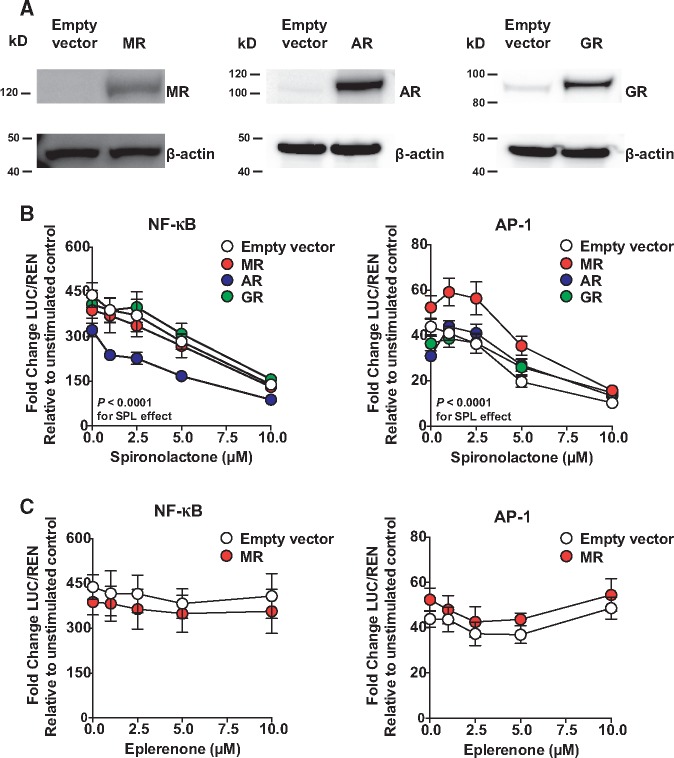Figure 1.
SPL suppresses NF-κB and AP-1 reporters independent of MR, AR, and GR in HEK293 cells. (A) Western blots of total cell lysate demonstrate human MR, AR, and GR overexpression in HEK293 cells 24 h post-transfection. Only GR had low, but detectable baseline expression. (B) SPL dose-dependently suppressed NF-κB and AP-1 reporter activity in the absence and presence of MR, AR, and GR (P < 0.0001 for the downward trend of slopes). Expression of AR and MR suppressed overall NF-κB signalling (P < 0.0001 and P = 0.004, respectively, for main effects without significant interactions with SPL). For AP-1 signalling, MR, AR and GR expression variably shifted SPL dose-response curves and altered their shapes, particularly at low concentrations (P ≤ 0.0004 for evidence of MR-, AR-, and GR-SPL interactions), but nevertheless SPL dose-dependent suppression of AP-1 was the overall predominant effect. (C) Unlike SPL, increasing doses of EPL in the absence and presence of MR had no effect on NF-κB reporter activity (P = 0.15) and only modestly suppressed AP-1 activity at concentrations ≤5 μM (P = 0.006), but not 10 μM (P = 0.42). Independent of EPL, MR expression alone modestly shifted NF-κB activity downward (P = 0.0006 for main effect) and AP-1 upward (P = 0.0003 for main effect). Twenty-four hours following transfection, cells were treated for 1 h with vehicle control or MR antagonist followed by stimulation with either TNFα (10 ng/ml; NF-κB activation) or PMA (100 nM; AP-1 activation) for 5 h. LUC activity was normalized to the renilla (REN) control. Luciferase results from five (NF-κB) and four (AP-1) independent experiments are presented relative to unstimulated control (mean ± SE).

